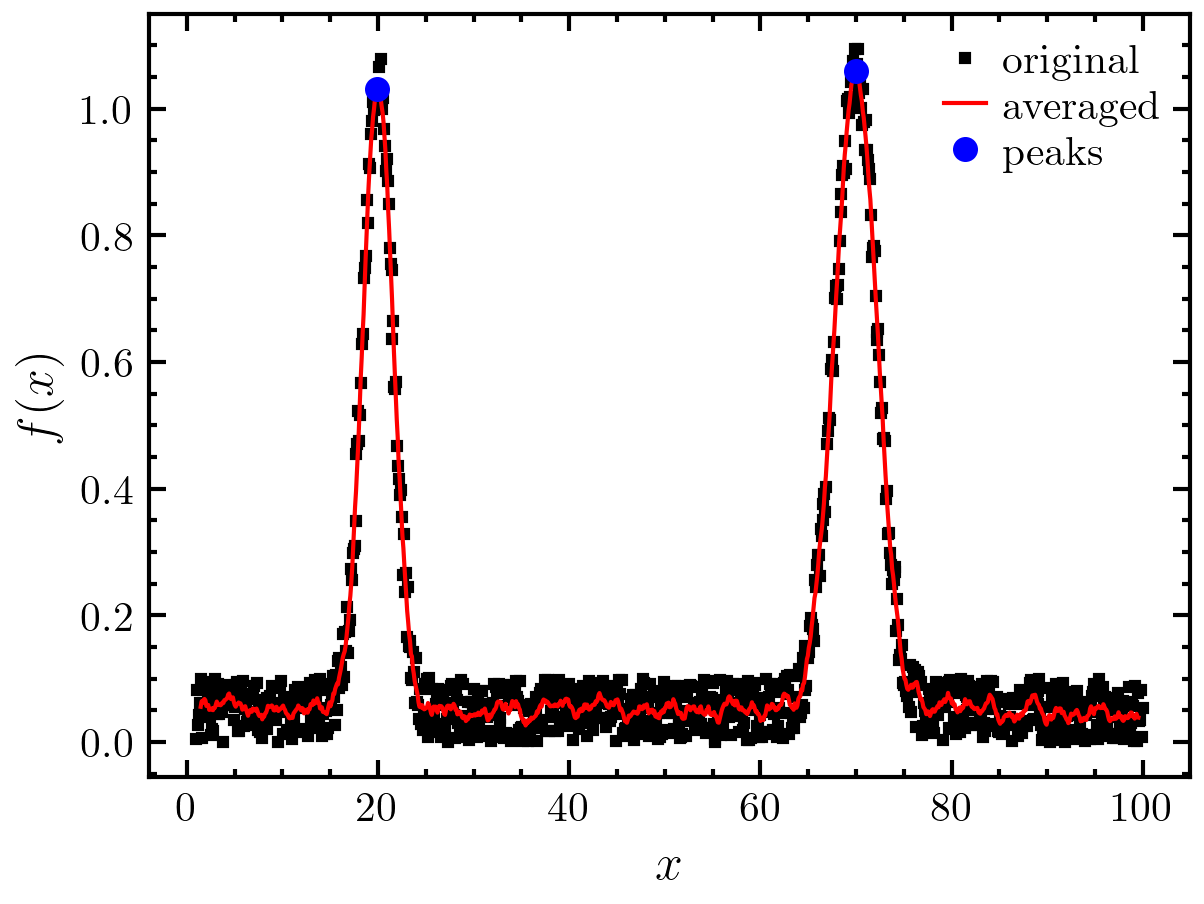amep.utils.detect2peaks#
- amep.utils.detect2peaks(xdata: ndarray, ydata: ndarray, nav: int = 11, distance: int = 8, height: float = 0.1, width: int = 4) tuple[list, list, ndarray, ndarray]#
Detects the two highest peaks in the given data after smoothing it with a running average. Includes also global maxima at the boundaries.
- Parameters:
xdata (np.ndarray) – x values as 1D array of floats.
ydata (np.ndarray) – y values as 1D array of floats (same shape as xdata).
nav (int, optional) – Number of points to average over via running mean. The default is 11.
distance (int, optional) – Minimum distance in samples between two peaks. The default is 8.
height (float, optional) – Minium height of a peak. The default is 0.1.
width (int, optional) – Minimum peak width in samples. The default is 4.
- Returns:
low (list) – Coordinates [x,y] of the peak at smaller x value.
high (list) – Coordinates [x,y] of the peak at larger x value.
avydata (np.ndarray) – Averaged y values.
avxdata (np.ndarray) – Averaged x values (same shape as avxdata).
Examples
>>> import amep >>> import numpy as np >>> x = np.linspace(1,100,1000) >>> y = np.exp(-(x-20)**2/5) >>> y += np.exp(-(x-70)**2/10) >>> y += np.random.rand(len(x))*0.1 >>> low, high, avy, avx = amep.utils.detect2peaks( ... x, y, nav=10, width=2 ... ) >>> fig, axs = amep.plot.new() >>> axs.plot(x, y, label='original', c='k', ls='') >>> axs.plot(avx, avy, label='averaged', c='r', marker='') >>> axs.plot( ... low[0], low[1], linestyle='', marker='.', ... c='b', markersize=10, label='peaks' ... ) >>> axs.plot( ... high[0], high[1], linestyle='', ... marker='.', c='b', markersize=10 ... ) >>> axs.legend() >>> axs.set_xlabel(r'$x$') >>> axs.set_ylabel(r'$f(x)$') >>> fig.savefig('./figures/utils/utils-detect2peaks.png') >>>

